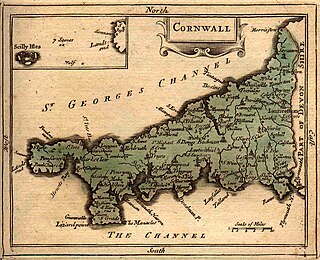A century is a period of 100 years. Centuries are numbered ordinally in English and many other languages.

Bohuslän is a Swedish province in Götaland, on the northernmost part of the country's west coast. It is bordered by Dalsland to the northeast, Västergötland to the southeast, the Skagerrak arm of the North Sea to the west, and the county of Østfold, in Norway, to the north.

Södermanland, sometimes referred to under its Latin form Sudermannia or Sudermania, is a historical province or landskap on the south eastern coast of Sweden. It borders Östergötland, Närke, Västmanland and Uppland. It is also bounded by lake Mälaren and the Baltic Sea.

Uppland is a historical province or landskap on the eastern coast of Sweden, just north of Stockholm, the capital. It borders Södermanland, Västmanland and Gästrikland. It is also bounded by lake Mälaren and the Baltic sea. On the small uninhabited island of Märket in the Baltic, Uppland has a very short and unusually shaped land border with Åland, an autonomous province of Finland.
100 or one hundred is the natural number following 99 and preceding 101.

One Hundred Years of Solitude is a landmark 1967 novel by Colombian author Gabriel García Márquez that tells the multi-generational story of the Buendía family, whose patriarch, José Arcadio Buendía, founded the town of Macondo, a fictitious town in the country of Colombia.
The Indian numbering system is used in the Indian subcontinent and in Burma. The terms lakh and crore are used in Indian English to express large numbers. For example, in India 150,000 rupees is called 1.5 lakh rupees, written ₹1,50,000; while 30,000,000 rupees is called 3 crore rupees, written ₹3,00,00,000 with commas at the thousand, lakh, and crore levels; and 1,000,000,000 rupees is called 100 crore rupees or one arab अरब, written ₹1,00,00,00,000. There are also words for numbers larger than 1 crore, but these are not commonly used and unfamiliar to most speakers. In common parlance, the thousand, lakh, crore terminology repeats for larger numbers: thus 1,000,000,000,000 becomes 1 lakh crore, written as 10,00,00,00,00,000. However, after 100 crore it is called 1 arab and after 100 arab it is called 1 kharab and so on.

In the sport of cricket, a century is a score of 100 or more runs in a single innings by a batsman. The term is also included in "century partnership" which occurs when two batsmen add 100 runs to the team total when they are batting together. A century is regarded as a landmark score for batsmen and a player's number of centuries is generally recorded in his career statistics. Scoring a century is loosely equivalent in merit to a bowler taking five wickets in an innings, and is commonly referred to as a ton or hundred. Scores of more than 200 runs are still statistically counted as a century, although these scores are referred as double, triple, and quadruple centuries, and so on.

The hundreds of Cornwall were administrative divisions (hundreds) into which Cornwall, the present day administrative county of England, in the United Kingdom, was divided between c. 925 and 1894, when they were replaced with local government districts

Lands administrative divisions of Australia are the cadastral divisions of Australia for the purposes of identification of land to ensure security of land ownership. Most states term these divisions as counties, parishes, hundreds, and other terms. The eastern states of Queensland, New South Wales, Victoria and Tasmania were divided into counties and parishes in the 19th century, although the Tasmanian counties were renamed land districts in the 20th century. Parts of South Australia (south-east) and Western Australia (south-west) were similarly divided into counties, and there were also five counties in a small part of the Northern Territory. However South Australia has subdivisions of hundreds instead of parishes, along with the Northern Territory, which was part of South Australia when the hundreds were proclaimed. There were also formerly hundreds in Tasmania. There have been at least 600 counties, 544 hundreds and at least 15,692 parishes in Australia, but there are none of these units for most of the sparsely inhabited central and western parts of the country.

The Hundred Years' War was a series of conflicts waged from 1337 to 1453 by the House of Plantagenet, rulers of the Kingdom of England, against the French House of Valois, over the right to rule the Kingdom of France. Each side drew many allies into the war. It was one of the most notable conflicts of the Middle Ages, in which five generations of kings from two rival dynasties fought for the throne of the largest kingdom in Western Europe. The war marked both the height of chivalry and its subsequent decline, and the development of strong national identities in both countries.

Småland is a historical province (landskap) in southern Sweden. Småland borders Blekinge, Scania, Halland, Västergötland, Östergötland and the island Öland in the Baltic Sea. The name Småland literally means Small Lands. The Latinized form Smolandia has been used in other languages. The highest point in Småland is Tomtabacken, at 377 metres (1,237 ft).

Cungena is a settlement in South Australia. It is in the District Council of Streaky Bay, on the Eyre Highway between Kyancutta and Ceduna. The town was surveyed and proclaimed in 1917, named after the Hundred of Cungena proclaimed in 1913. Cungena also includes the former town of Capietha.

In Greek mythology, the Hecatoncheires, or Hundred-Handers, also called the Centimanes,, named Cottus, Briareus and Gyges, were three monstrous giants, of enormous size and strength, with fifty heads and one hundred arms. In the standard tradition they were the offspring of Uranus (Sky) and Gaia (Earth), who helped Zeus and the Olympians overthrow the Titans.











